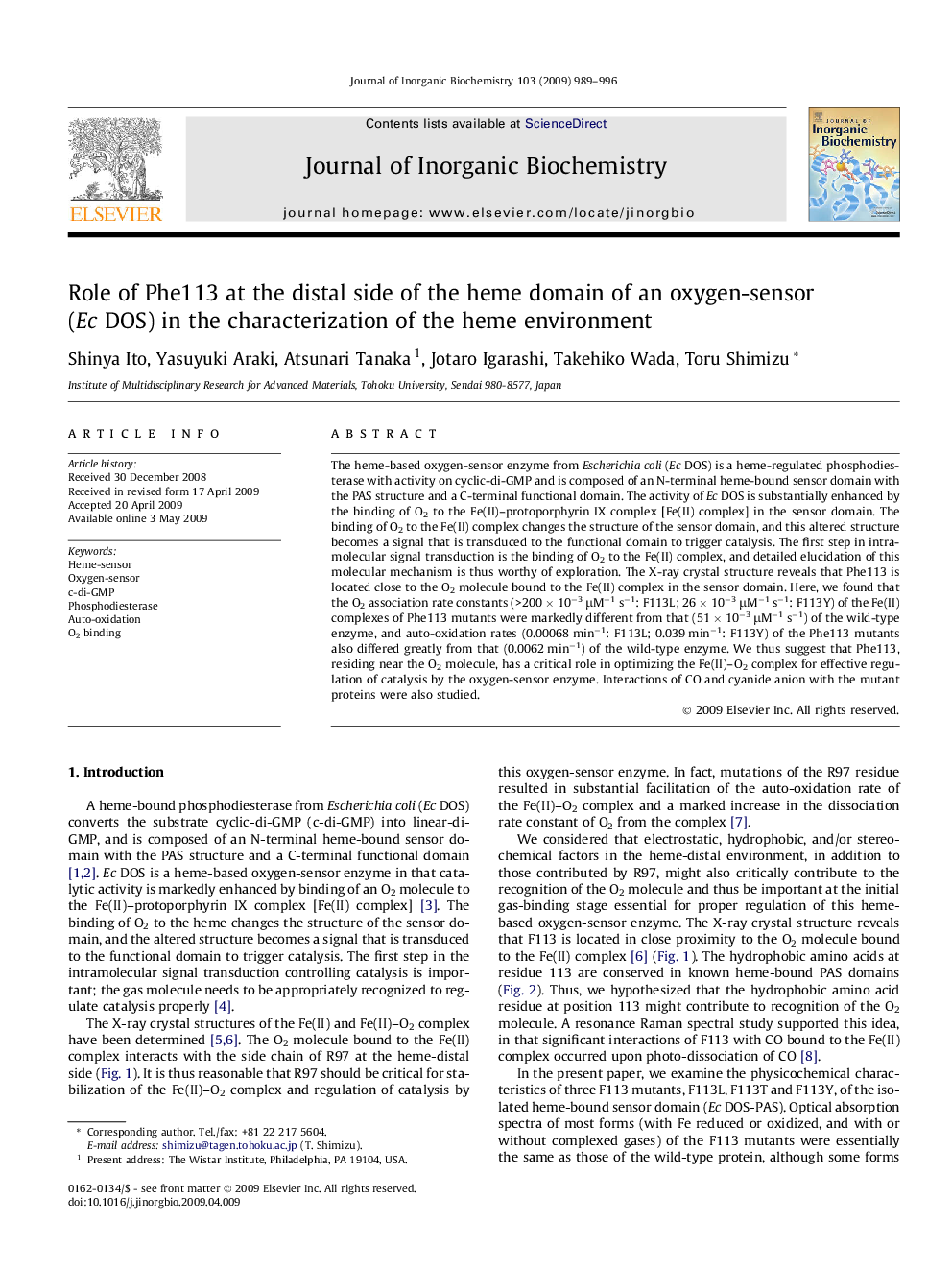| Article ID | Journal | Published Year | Pages | File Type |
|---|---|---|---|---|
| 1318028 | Journal of Inorganic Biochemistry | 2009 | 8 Pages |
The heme-based oxygen-sensor enzyme from Escherichia coli (Ec DOS) is a heme-regulated phosphodiesterase with activity on cyclic-di-GMP and is composed of an N-terminal heme-bound sensor domain with the PAS structure and a C-terminal functional domain. The activity of Ec DOS is substantially enhanced by the binding of O2 to the Fe(II)–protoporphyrin IX complex [Fe(II) complex] in the sensor domain. The binding of O2 to the Fe(II) complex changes the structure of the sensor domain, and this altered structure becomes a signal that is transduced to the functional domain to trigger catalysis. The first step in intra-molecular signal transduction is the binding of O2 to the Fe(II) complex, and detailed elucidation of this molecular mechanism is thus worthy of exploration. The X-ray crystal structure reveals that Phe113 is located close to the O2 molecule bound to the Fe(II) complex in the sensor domain. Here, we found that the O2 association rate constants (>200 × 10−3 μM−1 s−1: F113L; 26 × 10−3 μM−1 s−1: F113Y) of the Fe(II) complexes of Phe113 mutants were markedly different from that (51 × 10−3 μM−1 s−1) of the wild-type enzyme, and auto-oxidation rates (0.00068 min−1: F113L; 0.039 min−1: F113Y) of the Phe113 mutants also differed greatly from that (0.0062 min−1) of the wild-type enzyme. We thus suggest that Phe113, residing near the O2 molecule, has a critical role in optimizing the Fe(II)–O2 complex for effective regulation of catalysis by the oxygen-sensor enzyme. Interactions of CO and cyanide anion with the mutant proteins were also studied.
